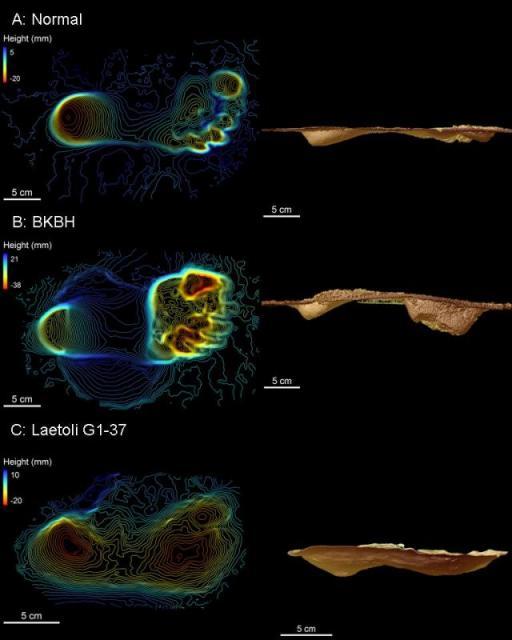
© Randy Haas/University of ArizonaImages show aerial and lateral images of (top to bottom) (A) a human footprint made walking normally with an extended knee and hip gait; (B) a human footprint made walking with bent-knees and hips to mimic a chimpanzee; and (C) a scan of a cast from the Laetoli fossil trackway. Notice that the toe is much deeper than the heel in the middle print and that the Laetoli scan looks more like the human print.
More than three million years ago, the ancestors of modern humans were still spending a considerable amount of their lives in trees, but something new was happening.
David Raichlen, an assistant professor in the
University of Arizona School of Anthropology, and his colleagues at the University at Albany and City University of New York's Lehman College have developed new experimental evidence indicating that these early hominins were walking with a human-like striding gait as long as 3.6 million years ago.
The results of their research appears in
PLoS ONE, a journal from the Public Library of Science.
A trackway of fossil footprints preserved in volcanic ash deposited 3.6 million years ago was uncovered in Laetoli, Tanzania, more than 30 years ago. The significance of those prints for human evolution has been debated ever since. The most likely individuals to have produced these footprints, which show clear evidence of bipedalism, or walking on two legs, would have been members of the only bipedal species alive in the area at that time,
Australopithecus afarensis. That species includes "Lucy," whose skeletal remains are the most complete of any individual
A. afarensis found to date.


